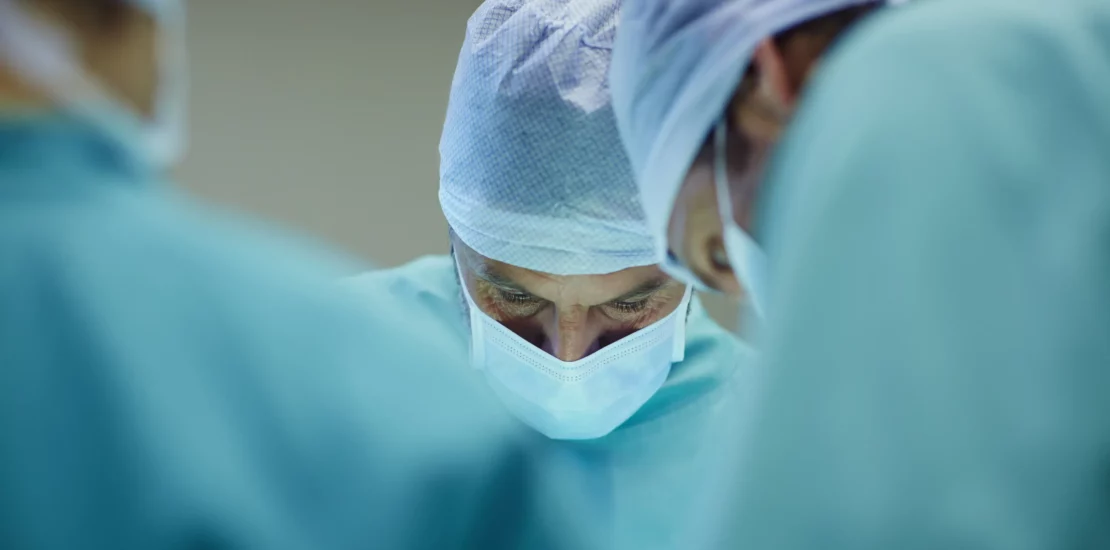- September 7, 2023
- Posted by: American Surgical
- Categories: Blog, Neurosurgery

Microsurgery – a specialized surgical technique that involves operating on delicate structures under high magnification using intricate instruments – has revolutionized the field of medicine. While it enables surgeons to perform procedures that were once considered impossible, microsurgery also presents a myriad of challenges and difficulties that require skill, precision, and continuous innovation to overcome. We delve into the complexities of microsurgery, the difficulties it poses, and the advancements that have been made to address these challenges.
Precision and Dexterity
One of the primary difficulties in microsurgery is the required level of exceptional precision and dexterity. Microsurgical procedures involve working with structures as small as a few millimeters or even micrometers in size. This demands a level of control and accuracy that far surpasses that of traditional surgery. Surgeons must navigate through complex anatomical pathways while minimizing damage to surrounding tissues, nerves, and blood vessels. The slightest tremor or miscalculation can have catastrophic consequences, potentially leading to compromised outcomes or patient harm.
Visual Challenges
Another significant challenge in microsurgery is the visual aspect. Surgeons perform microsurgery using surgical microscopes or magnifying glasses that provide an amplified view of the surgical site. However, this enhanced visualization comes with its own set of difficulties. The limited depth perception and the potential for eye strain can hinder a surgeon’s ability to accurately judge distances and work comfortably over prolonged periods. Tools like our ultra-thin Delicot patties were created with this in mind and are the thinnest cottonoid neurosurgical patties available, measuring only 0.33 mm thick.
Tissue Handling
Handling delicate tissues and sutures during microsurgery requires an exceptional level of finesse. Tissues can be easily damaged due to their fragility, and improper manipulation can lead to tissue tearing, reduced blood flow, and more. Suturing tiny blood vessels or nerves is particularly challenging, as the sutures used are often finer than human hair. Maintaining the integrity of these sutures while working under high magnification demands a steady hand and refined motor skills.
Tissue Ischemia
Tissue ischemia, the inadequate blood supply to tissues, is a significant concern in microsurgery. When blood flow is compromised during a procedure, the tissue becomes oxygen-deprived, leading to cell death and potential complications. Preventing tissue ischemia requires meticulous planning and execution, including the proper selection of blood vessels for anastomosis (surgical connection), as well as ensuring the patency and function of these vessels during and after surgery.
Time and Patience
Microsurgery demands an extraordinary amount of time and patience from surgeons. Procedures can take much longer than their conventional counterparts due to the intricate nature of the work. Surgeons must work meticulously, often in confined spaces, which can lead to physical strain and fatigue. Maintaining focus and concentration for extended periods is essential, as even a momentary lapse in attention can have dire consequences.
Technological Advancements
In recent years, technology has played a pivotal role in addressing the difficulties associated with microsurgery. Several advancements have significantly improved the precision, visualization, and outcomes of microsurgical procedures.
Robotic Assistance
Robotic-assisted microsurgery has gained prominence as a means to enhance surgical precision. Robotic systems offer tremor filtering, motion scaling, and improved maneuverability, enabling surgeons to perform intricate movements with greater accuracy. These systems also provide a 3D visualization of the surgical field, enhancing depth perception and aiding surgeons in navigating complex anatomical structures.
Image-Guided Navigation and Microscopic Imaging
Image-guided navigation systems utilize preoperative imaging data to create 3D maps of the patient’s anatomy. These maps are superimposed onto the surgeon’s view, aiding in real-time navigation during surgery. This technology helps surgeons identify critical structures, plan optimal paths, and avoid potential pitfalls. Advancements in microscope technology have led to the development of high-definition imaging systems that offer superior visualization. These microscopes provide enhanced depth perception, improved color contrast, and reduced glare, addressing some of the visual challenges associated with microsurgery.
Surgical Simulation and Training
To overcome the challenges posed by the steep learning curve of microsurgery, surgical simulation and training programs have been developed. These programs allow surgeons to practice and refine their skills in a controlled environment before performing actual procedures on patients. Virtual reality simulations and physical models provide valuable opportunities for skill development, improving the overall competence of microsurgeons.
Microsurgery, while offering unprecedented possibilities in the realm of medicine, presents a range of difficulties that require specialized training, skill, and continuous innovation to overcome. The need for exceptional precision, dexterity, and visual acuity makes microsurgery a demanding field that tests the limits of a surgeon’s abilities. However, advancements in technology, such as robotic assistance, image-guided navigation, and improved microscopic imaging, have paved the way for addressing these challenges and enhancing the outcomes of microsurgical procedures. As technology continues to evolve, it is likely that the field of microsurgery will become even more accessible and effective, offering new hope to patients and further pushing the boundaries of what is possible in the realm of medical intervention.
Leave a Reply
You must be logged in to post a comment.
